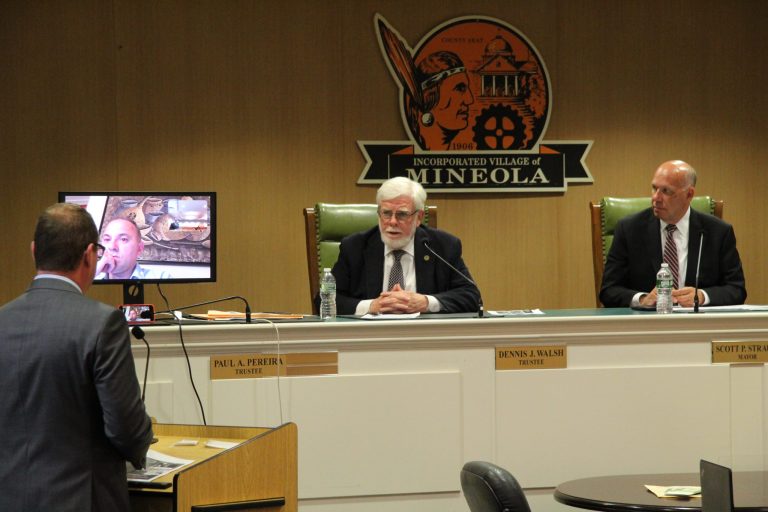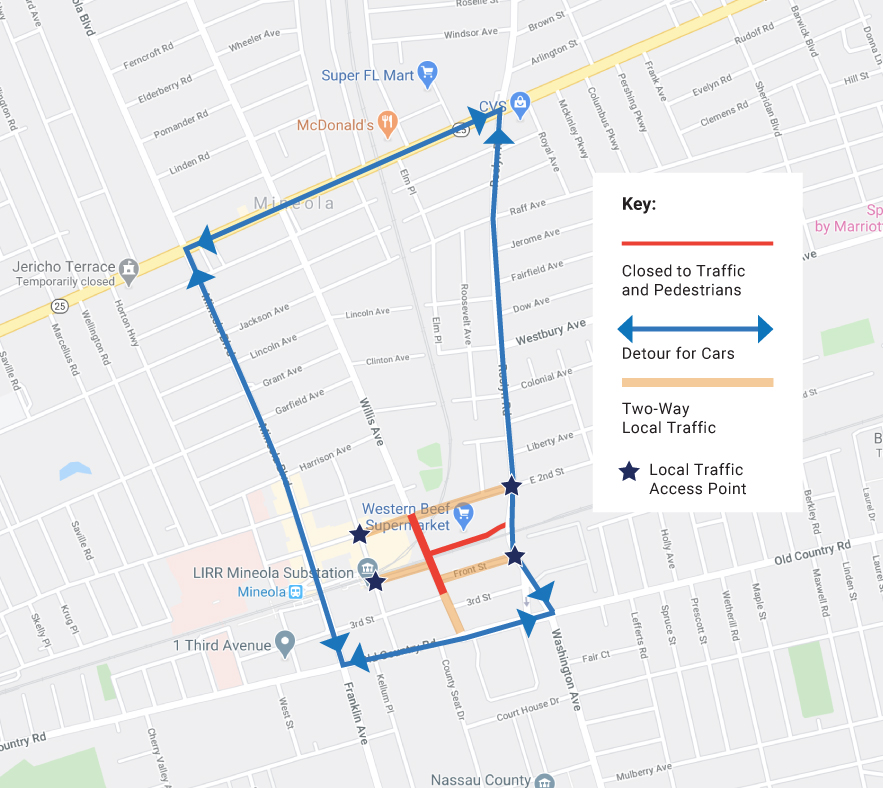
Construction – by the Long Island Rail Road – was a focus of presentations made to the board of trustees at a Mineola village meeting last week.
LIRR spokespeople explained their intention to close a portion of Willis Avenue on the weekend of June 26 and eliminate its railroad crossing. Separately, the Mineola Building Department also indicated how work orders for residential homes outpaced commercial properties for the first time in five years.
Travis Brennan, a spokesman for the MTA, characterized the concluding steps of the LIRR’s expansion project as a “tremendous challenge as far as a constructability standpoint” at the June 2 meeting.
During a closure starting Friday, June 26, and ending the following Tuesday morning, no traffic will pass on Hinck Way or a part of Willis Avenue. Local traffic on Second Street, including access to Western Beef’s parking lot, will be allowed.
“During that shutdown, our teams are going to very quickly mobilize a jacking system,” Brennan said. “We are going to push a tremendously heavy concrete box underneath the active rail line.”
Also part of the railroad’s expansion project is the nearby Harrison Avenue parking garage, which began construction in 2018. After trustee Paul Cusato asked when the garage would be open to the public, Brennan said the MTA is at the finish line, but he could not give the village an exact date.
“There’ve been some challenges to be perfectly blunt,” Brennan said. “We have very few items left to complete on that punch list.”
Even so, Deputy Mayor Paul Pereira is confident the parking garage project is at the finish line, saying “sometimes the last mile is the hardest mile.”

The LIRR mainline has not been the only site of construction in Mineola. As indicated by Daniel Whalen, superintendent of buildings at the Mineola Building Department, an increased number of residents have started construction in their homes.
In a department report presented to the trustees, Whalen outlined how the permits issued for private residential work outpaced commercial work for the first time in the last five years, calling it a sure sign that people have made commitments to their existing homes.
“A healthy environment,” Whalen said. “People don’t spend those types of money if they’re not happy where they are.”






